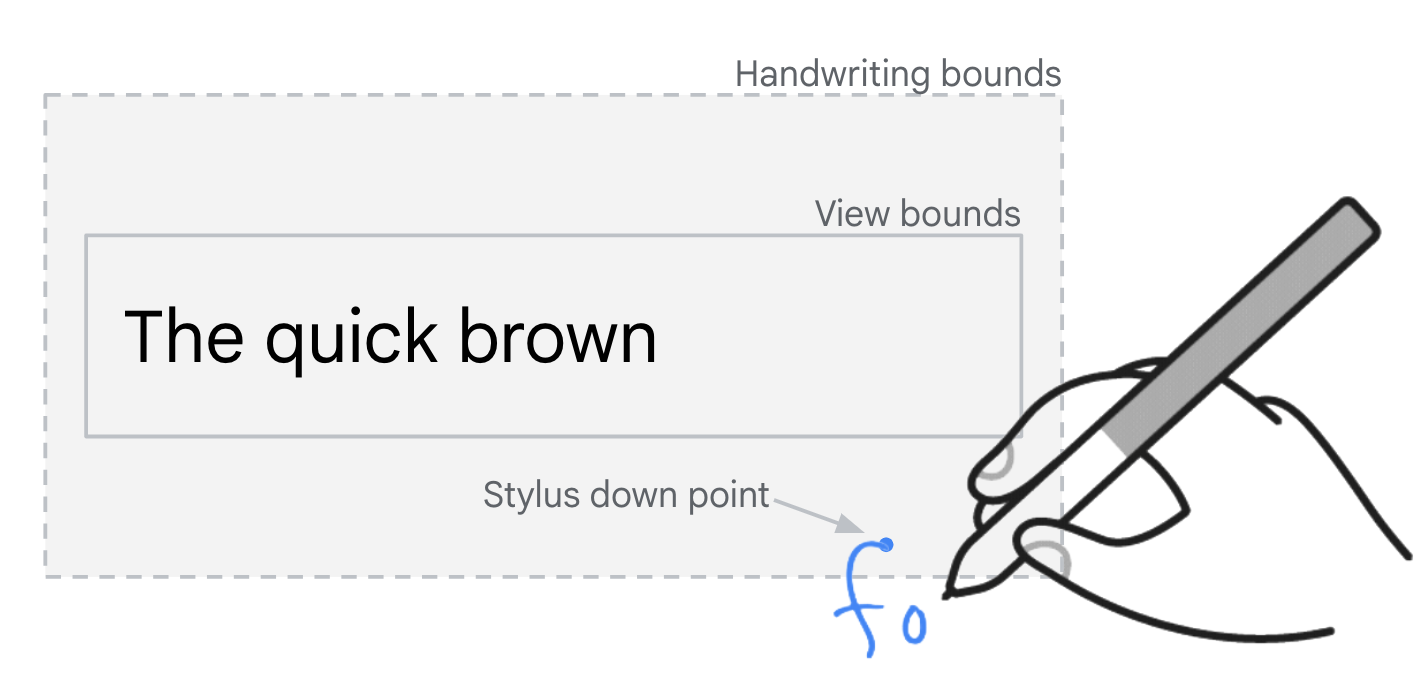The Jetpack androidx.compose.material3 library enables users to write into any TextField component in any app using a stylus.
To enable stylus input by default, add the library dependency to your app's build.gradle file:
Kotlin
dependencies { implementation("androidx.compose.foundation:foundation:LATEST_COMPOSE_VERSION") } android { buildFeatures { compose = true } composeOptions { kotlinCompilerExtensionVersion = "LATEST_EXTENSION_VERSION" } kotlinOptions { jvmTarget = "LATEST_JVM_VERSION" } }
Groovy
dependencies { implementation 'androidx.compose.foundation:foundation:LATEST_COMPOSE_VERSION' } android { buildFeatures { compose true } composeOptions { kotlinCompilerExtensionVersion = 'LATEST_EXTENSION_VERSION' } kotlinOptions { jvmTarget = 'LATEST_JVM_VERSION' } }
TextField
Stylus handwriting is enabled for all TextField components by default on Android 14 and higher and the androidx.compose.foundation:foundation:1.7.0 dependency. Handwriting mode is started for a TextField when a stylus motion event is detected within the handwriting bounds of the component.
The handwriting bounds include 40 dp of vertical padding and 10 dp of horizontal padding around the input field.

TextField components. Stylus handwriting is not supported for TextField fields when the input method editor is requested with KeyboardType.Password.
Input delegation
Apps can display placeholder UI elements that appear to be text input fields but are actually just static UI elements with no text input capability. Search fields are a common example. Tapping the static UI element triggers a transition to a new UI that contains a functional text input field focused for input.
Stylus input delegation
Use the handwriting delegation APIs to support stylus handwriting input for placeholder input fields (see handwritingDetector and handwritingHandler). The placeholder UI element is configured to delegate handwriting to a functional input field. For an example implementation, see HandwritingDetectorSample.kt.
Stylus handwriting mode starts when the functional input field gains focus and creates an InputConnection.
Testing
Stylus handwriting is supported on Android 14 and higher devices with a compatible stylus input device and an input method editor (IME) that supports the Android 14 stylus handwriting APIs.
If you don't have a stylus input device, simulate stylus input on any device with root access (including emulators) using the following Android Debug Bridge (adb) commands:
// Android 14 adb shell setprop persist.debug.input.simulate_stylus_with_touch true && adb shell stop && adb shell start // Android 15 and higher // Property takes effect after screen reconfiguration such as orientation change. adb shell setprop debug.input.simulate_stylus_with_touch true Use the Gboard beta for testing if you are using a device that doesn't support stylus.
Additional resources
- Material Design — Text fields
- Handle user input
